A Timeline of the Rich History of the Hall’s Hill Volunteer Fire Department
For decades during segregation, Fire Station #8 was the only Arlington, Va. station staffed by African Americans.
Tap or click on images to view larger versions.

Halls Hill Volunteer Fire Department, taken on the grounds of the John M. Langston Elementary School, probably 1930s
1898
First firefighting company in future Arlington County formed in Cherrydale by volunteers.
Other volunteer firefighting companies to follow will include Ballston in 1908 and Clarendon in 1909.
1918
Group of volunteer firefighters forms in the Hall’s Hill area, an African American neighborhood that began as home to many freed slaves and was kept separate from adjacent white communities in part by an 8-foot wooden fence.
The Hall’s Hill firefighters acquire a 60-gallon chemical tank, which has to be pulled by six men over unpaved, often muddy roads. At some point, company equipment is housed on the grounds of the John Langston Elementary School, 2121 N. Culpeper St.
1920
Arlington County is formally established by the Virginia General Assembly from the previously named “Alexandria County.”
1925
Hall’s Hill Volunteer Fire Department (HHVFD) elects its first officers and trustees.
Another African-American volunteer firefighter company is formed, the East Arlington VFD, later to be disbanded by the County Board in February 1941 as the “Hell’s Bottom” area of Arlington is prepared for construction of the Pentagon.
1926
HHVFD buys its first motor-driven engine, a 1917 Mitchell, with funds raised through door-to-door canvassing and pledged donations. The 60-gallon tank is mounted on the Mitchell.
1927
HHVFD is officially incorporated. The company buys a one-ton Chevrolet chassis, which is mounted with two 60-gallon tanks.
HHVFD moves to a lot on Lee Highway and a telephone is installed in the firehouse. Each residence in the community receives a card asking for a donation of 25 cents each month to support the fire company. Fire calls are routed by the chief operator of the local phone company.
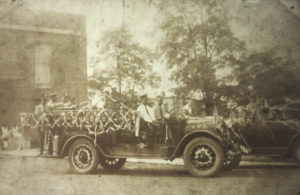
Hall’s Hill Volunteer Firetruck, probably 1930s, apparently marking a national celebration.
1932
Arlington government begins paying for equipment and the utility bills for volunteer fire companies in the County and provides HHVFD with its first pumper.
1933
HHVFD company acquires a 1929 Diamond-T truck.
1934
The HHVFD relocates to a lot at 2209 North Culpeper St. near Lee Highway and a new firehouse is built. The land is owned by the Hicks family, which runs several businesses including the Hicks Store and Restaurant just west.
The firehouse develops as a de facto community center, providing a constant source for local news and conversation and eventually offering the convenience of a pay telephone and a soda machine. The volunteers would eventually add recreation and sleeping quarters in the 1950s to accommodate expanded shifts and more firefighters.
To indicate a fire call, volunteers are summoned to the station by a blaring siren mounted on the roof under a simple square belfry.
1935
A blanket organization of Arlington fire companies—the Arlington County Fireman’s Association– is formed but without the Hall’s Hill and East Arlington men.
1937
The Arlington County Fire Marshall becomes the Chief of the Fire and Safety Division and goes on the official government payroll as the first firefighting professional.
1940
The County begins negotiating a pay rate for a professional fire staff—to work within the volunteer companies primarily as drivers–in July. Hall’s Hill will be last among the firefighting companies assigned paid professionals with three men added in January 1951.
As a unified County Fire Department comes together, Arlington government formally begins paying rent to the volunteer companies, including Hall’s Hill, for the use of their firehouses.
Jimmie Taylor, born in 1936 and a Hall’s Hill resident from childhood, remembers the HHVFD having an unofficial mascot, a large German Shepard named Brownie, who seemed to have no specific owners but would often hang around the firehouse and even follow crews on calls. Brownie’s role was later taken, on a somewhat more official basis, by a Dalmatian named Miss Weeks, who had puppies each named for a day of the week.
Taylor recalls HHVFD volunteers sometimes pushing an aging firetruck onto Lee Highway to get its engine started as the vehicle rolled down the hill. Rochester Weeden was frequently behind the wheel. Weeden was known throughout the neighborhood as “Maybe-so,” the result of what Taylor says was Weeden’s ready response to almost any question and also his philosophy toward the balky truck.
1941
The County Board agrees to pay six of Arlington’s seven volunteer fire departments a monthly rate of $455 for designated professional firefighters. The HHVFD is excluded.
Equipment from the now-disbanded East Arlington VFD is transferred to the HHVFC.
The HHVFD company’s Diamond-T is replaced with a 1935 GMC truck.
1944
The Hicks family deeds the 2209 North Culpeper lot to the “Trustees of the Arlington County Fire Department Engine No. 8.”
1950-1951
The company’s 1935 GMC truck is replaced by a 600-gallon pumper built in 1929. Two-way radios are also added.

1947 list of Volunteer Firefighters at Fire Station 8
1951
Station No. 8’s first three County-paid firefighters arrive in January to be followed by a fourth later in the year. A fifth is added in 1952, a sixth in 1953 and two more in 1954. All men are African-American. The same will hold true for subsequent hires into the early 1960s.
A popular notion holds that No. 8 is the first officially black-run and -operated fire station south of the Mason-Dixon line.
Original paid firefighters of Station No. 8, in order of hire: Alfred Clark, Julian Syphax, George McNeal, Archie Syphax, Hartman Reed, James K. Jones, Carroll Deskins, Henry Vincent, Carl Cooper, Ervin Richardson, Jimmy Terry, Wilton Hendricks, Bill Warrington and Bobby Hill.
According to Station No. 8 firefighter Hartman Reed, who was hired in 1952, “We were a segregated station and for some reason, the feeling during those years was that they wouldn’t involve us in things that were outside of our jurisdiction too often.” Reed was interviewed for a 2008 Arlington Public Library oral history.
During a huge inferno in Rosslyn on a particularly cold night, almost all County fire crews are called in except those of Station No. 8. That night Reed tells the only other man on duty at Hall’s Hill: “Thank goodness for Jim Crow.”
Reed recalls a house fire at which the owner would not let Station No. 8 crews take their positions. Other stations had to be summoned. He describes the episode as somewhat rare but says that when Station No. 8 responded to calls beyond Hall’s Hill, he and colleagues would often hear insults including one barrage from a drunk man being treated for a broken ankle. “We were trying to help him but it didn’t make no difference,” Reed remembered with a laugh in 2008.
1957
Alfred Clark becomes the first African American fire captain in the County, continuing to serve at Station No. 8. His daughter Kitty remembers that when the station later became integrated in the 1960s, some white firefighters said they “would not serve under a ‘Ni…’ and even wrote it on the chalkboard. The battalion chief came up, ordered it removed, and told the white firefighters they will serve and respect Captain Clark.”
1959
In an attempt to prevent the integration of Arlington’s Stratford Junior High School, Rep. Joel T. Broyhill (R-Va.) visits the home of Carrol Deskins to imply that the Station No. 8 firefighter could lose his job if his son Ronnie joins other African American students in enrolling at the school. Deskins tells Broyhill to leave. Ronnie Deskins and three other students make Stratford Virginia’s first integrated public school on Feb. 2. Carrol Deskins remained a firefighter.
1960
The Arlington Council on Human Relations issues a leaflet condemning the “limitations and uncertain opportunities which daily confront Negro citizens in Arlington” as “a blight on the county and a burden upon all of its residents.” In June, civil rights activists launch a series of lunch counter sit-ins at Arlington drug stores and eateries, including some within blocks of Hall’s Hill. Corporate ownerships drop segregated seating within days.
1962
Ground is broken for a new Station No. 8 on land immediately east of the 2209 North Culpeper site, where, among other things, a small grocery store and an auto shop had stood. The new firehouse will have the address 4845 Lee Highway. The site is made up of five parcels that will be purchased by the County from 1962 to 1968. The final parcel is deeded by the Hall’s Hill Volunteer Fire Department and the Hicks family.
Late 1962-Early 1963
Integration reaches the Arlington County Fire Department including Station No. 8, as it prepares for a new, larger home next door.
1963
The new Station No. 8 at 4845 Lee Highway opens June 17 with two pumpers and a new 100-foot aerial ladder truck. It is staffed with 17 paid firefighters and several volunteers. The first floor contains a dispatch board, offices, sleeping and recreation areas. The basement includes a community room.
Probably 1964
Arlington-based American Nazi Party leader George Lincoln Rockwell visits Station No. 8 in full storm trooper regalia to speak with firefighters about his plan to pay African Americans to relocate to Africa. Then-Lieutenant Reed remembers the meeting as “amusing” but describes Rockwell as “dead serious.” Rockwell, who had taunted civil rights protesters during Arlington lunch counter sit-ins in 1960, will be shot dead by an associate in the parking lot of the Dominion Hills Shopping Center on Wilson Boulevard in August 1967.
1968
While other Arlington fire stations are dispatched into the District when riots break out following the April 4 assassination of Dr. Martin Luther King, Station No. 8 is not asked to participate. Reed says he never knew why.
1974
The Arlington County Fire Department makes history with the hiring of Judy Livers (later Brewer), the nation’s first female firefighter. She is assigned to Station No. 4 in Clarendon and goes on to a distinguished career, retiring in 1999 as a battalion chief.
1999
A study for the County Manager identifies Station No. 8, plus three others, for possible “relocation, consolidation, replacement or closure” because it is on a “cramped site” and “poorly situated in relation to the heavy traffic on Lee Highway.” Studies of response times in 2000 and 2012 will reinforce County interest in moving Station No. 8 to a new location in north Arlington.
2016
After community resistance to a move, the Arlington County Board votes to build a new Fire Station No. 8 on the station’s current Lee Highway site.
- From the Hall’s Hill murals by Roderick Turner, located adjacent to Langston-Brown Community Center.
- Remember Station 8, Paulette Washington
- Rare Vintage Station No. 8 Turnout Gear
More images of HHFVD/Station No. 8 on flickr
Do you have suggested additions or corrections for this timeline? Please use the comments section below.
This timeline was written by Peter Golkin, a former Library staff person. Assistance was provided by Judy and Arthur Branch, Kitty Clark-Stevenson, Capt. Chuck Kramaric, Jimmie Taylor, Hartman Reed and the Arlington VA Virtual Fire Museum.
Read more articles on Arlington’s history on the Center for Local History Blog.
For more information regarding the materials and collections available for research, please contact the Center for Local History at 703-228-5966.
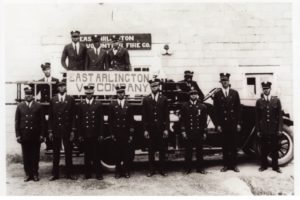
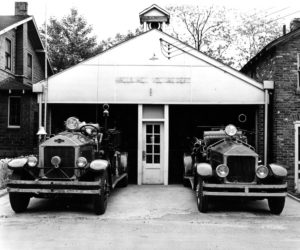
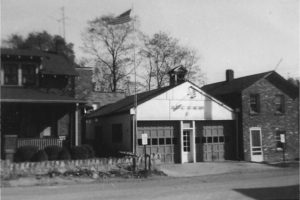
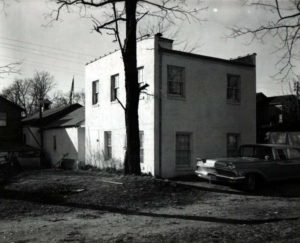
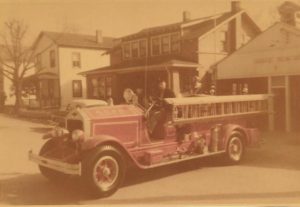
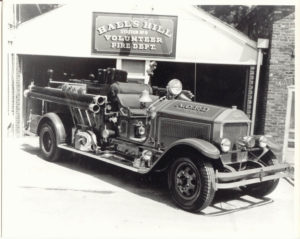

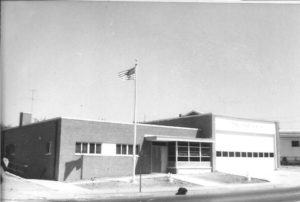
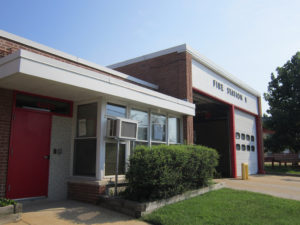
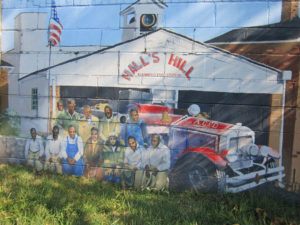

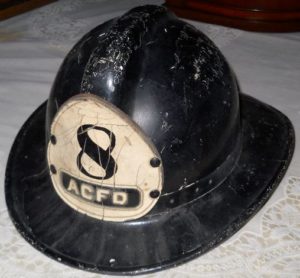
This article about the HHVFD and ACFD was quite informative and a pleasurable read. Several of those mentioned are appreciated acquaintances I am honored to have met. It sure shows what changes have come to pass over the past 117 years.
Was there a man named Clovis Chinn also a part of the fire fighters doing the beginning of fire station 8?
There indeed was a firefighter named Clovis Chinn who was part of Fire Station No. 8 in the late 1940s before the first paid crewmembers arrived in January 1951. Mr. Chinn’s name is on the timeline’s photo of a list of station volunteers from May 1947. Thanks for asking.